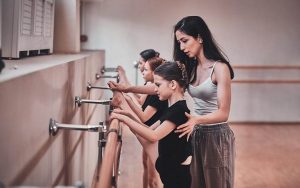
Stepping into the world of ballet can feel both thrilling and intimidating, especially when the words Royal Academy of Dance start floating around. The reputation of this global dance institution precedes itself, and for good reason: it represents over a century of excellence, artistry, and structured ballet education. But before parents sign up their young dancers or adults leap into an exam-level course, there’s plenty to understand about how ballet at RAD works, what it stands for, and how to prepare for the experience.
The Royal Academy of Dance System
The Royal Academy of Dance (RAD) is one of the world’s most recognised ballet examination boards. Established in 1920, it developed a progressive and standardised syllabus that balances artistry, technique, and musicality. Before enrolling, it helps to understand that ballet at RAD is about mastering a system of graded levels that correspond to age and ability. Each stage builds upon the last, ensuring structured development.
Children as young as five can begin with foundational exercises that develop coordination and rhythm, while teens and adults may work towards graded exams that refine precision and performance quality. Each level challenges dancers technically while nurturing creativity, allowing students to feel both accomplished and inspired to sustainable growth in ballet.
Decoding the RAD Grading and Examination Process
Before you start, it’s essential to know how the ballet in the RAD syllabus measures progress. Graded exams and vocational levels assess three main components: technique, musicality, and performance. Examiners look for precision in posture and steps, responsiveness to music, and confidence in execution.
Unlike typical school tests, RAD examinations are structured experiences. Dancers perform before an examiner in a calm, supportive environment. They’re scored on their overall presentation rather than perfection. Students may take Class Awards, which offer participation-based feedback, making it ideal for beginners or younger children still building confidence.
Preparing the Mind and Body for Ballet Training
One of the most common misconceptions about ballet is that it’s all about flexibility. While mobility is important, readiness for ballet RAD training involves both physical and mental preparation. Young dancers entering a Royal Academy of Dance programme should focus on building body awareness.
Ballet demands patience, focus, and resilience. Before the first class, it helps to explain to children that progress in ballet takes time. This sets realistic expectations and fosters perseverance, especially as they move through structured RAD levels. Preparation often means rekindling body awareness and flexibility gradually.
What to Expect from Your First RAD Class
Before you start, it’s helpful to visualise what a typical ballet RAD class looks like. The progression is designed to improve posture, strength, and musical coordination. In the early stages, instructors emphasise body alignment and rhythm through repetitive yet graceful movements. Students quickly learn that ballet is as much about discipline as it is about art.
Teachers certified under the Royal Academy of Dance are trained to balance encouragement with technical precision, ensuring students learn correct form without fear of failure. Parents often notice changes after just a few weeks. But it’s equally normal for beginners to feel frustrated as their bodies adapt to new patterns. Every class builds the foundation for later achievements that demand strength and balance.
Ballet Etiquette and Essentials
Before the first lesson, understanding ballet etiquette is key to fitting seamlessly into an RAD ballet environment. Proper attire allows instructors to observe body alignment and ensure safe movement. For younger dancers, following these routines instils a sense of responsibility and discipline.
Students should also arrive early, warm up quietly, and show respect for peers and teachers. These traditions are timeless lessons in professionalism that shape how dancers carry themselves, both in and out of the studio.
The Importance of Yearly RAD Exams
As students advance, yearly examinations under the Royal Academy of Dance framework help solidify progress. Preparing for exams teaches valuable life skills: goal-setting, time management, and composure under observation. Many dancers recall their first RAD exam as a defining confidence boost.
For parents, supporting a child through ballet RAD exams means more than reminding them to practise. Encouragement, balanced rest, and attending studio showcases can make the journey positive and memorable.
Every Great Dancer Starts Somewhere
Before the pointe shoes and polished performances come years of quiet effort, guided correction, and steady improvement. The Royal Academy of Dance system exists to inspire, giving students a clear path to growth. Whether your child dreams of dancing professionally or wants to experience the magic of movement, beginning with ballet RAD offers structure, support, and creativity in equal measure. With preparation, patience, and passion, every student can find their rhythm, one plié at a time.
Thinking of starting your ballet RAD journey? Reach out to AQ Dance today, learn more about the Royal Academy of Dance syllabus and how it shapes confident, creative dancers from day one.



